Choosing the Perfect Road Trip Car
If you’re planning to sleep in your car, then there are certain features you should look out for when car shopping. Do the back seats lay all the way flat? Any ridges and you’ll have to compensate with bedding or boards. Test the seats to make sure there isn’t an upwards slant once they’re down. If the car has bucket back seats, that’s even more or a red flag.
Can you lay down comfortably in the back? My boyfriend is 6’7” tall, so this wasn’t easy to find. Don’t be too embarrassed to try it out at the car lot, the salesman we dealt with found it pretty hilarious and interesting.
Do the wheel wells or anything else encroach on your space? Make sure the car is wide enough to fit you and whoever you might be traveling with. Our Outback fits Llew (6’7”), me (5’9”), and my border collie, Nym (40 lbs).
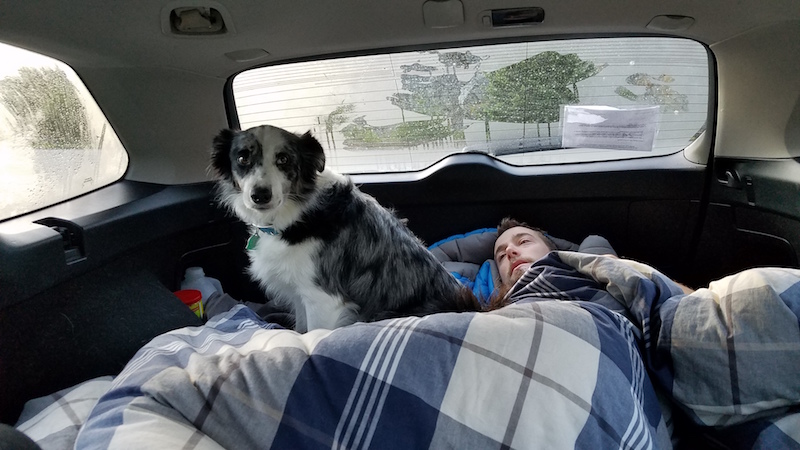
Do the front seats fold or scoot forward to give you extra space? The Outback has plenty of room in the back without moving the seats forward, but if your bed is slightly too short, this extra legroom comes in handy.
Are the windows tinted? This is a great feature to have for multiple reasons. First, it makes changing in the car less awkward. Second, if you’re sleeping somewhere public, it makes it so people can’t see in and can sometimes allow you to sleep places where it’s not technically permitted. Third, it keeps the back shaded so that you don’t get so hot.
Are there additional storage spaces? Sleeping in your car is much simpler if you don’t have to rearrange all of your belongings every night to make your bed. Look for something with a roof rack, tow hitch, or under-the-cargo-area storage. The Outback has all of this and it has made life so much simpler.
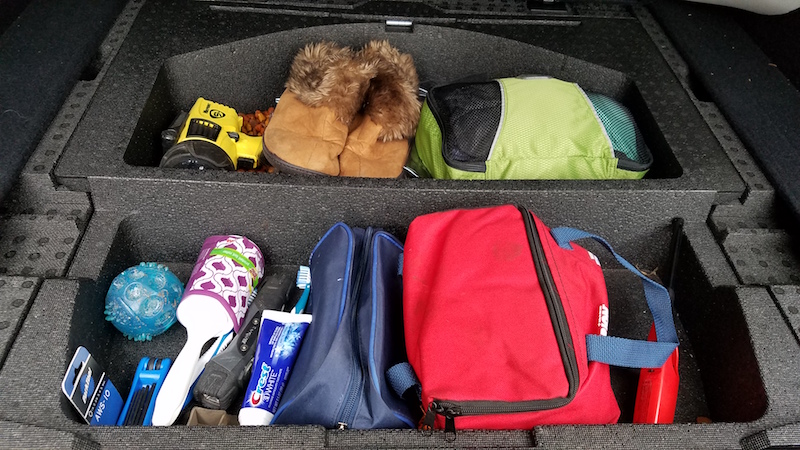
What outlets and ports are in the car? If you can, get a vehicle with a USB port or two. You also want to check how many cigarette outlets there are and where they’re located. We have an aftermarket converter box that allows us to plug into the cigarette outlet and then use that to use regular plugs. This is great if you are working while on the road and want to plug in your laptop. The Outback has 3 cigarette outlets, including one in the back for when we’re sleeping back there and want to plug in a laptop to watch a movie. One feature that’s missing for us is that the outlets do not work with the car off. This is good since it won’t run your battery dead and leave you stranded, but it is also super convenient if you have a car that allows you to charge your phone without having to be turned on.
Read about how we converted our Outback into a sleeper car here.
Other general considerations for the ultimate road trip vehicle:
Can the car handle any driving terrain? Look for a car that has AWD or 4WD so that you are confident that you can get yourself out of any situation and drive safely through areas where a 2WD vehicle would struggle. We drove from Seattle to Florida and back over Christmas in a 2WD Jeep Liberty and were constantly amazed by the Subarus passing us in the left lane despite the snow, sleet, and torrential downpours. While our drive time doubled through areas like South Dakota, theirs remained the same since they were capable of driving the speed limit through almost any poor condition. And not having to stop and put on tire chains? Brilliant.
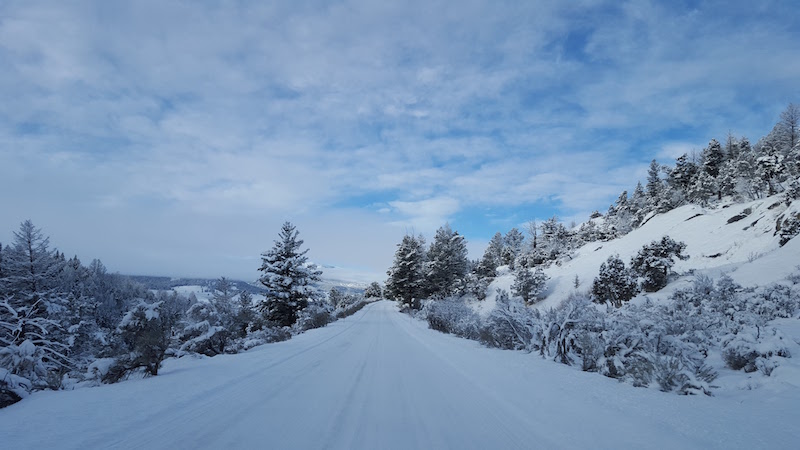
How well is it structured for good handling? For instance, our Jeep Liberty was very prone to rollovers (as Jeeps are). This is also a reason that we picked the Outback over the Forester. They have the same ground clearance but the Outback is wider and has a lower roof so that you feel more comfortable going around sharp curves or when driving off road. Lower center of gravity is almost always a good thing.
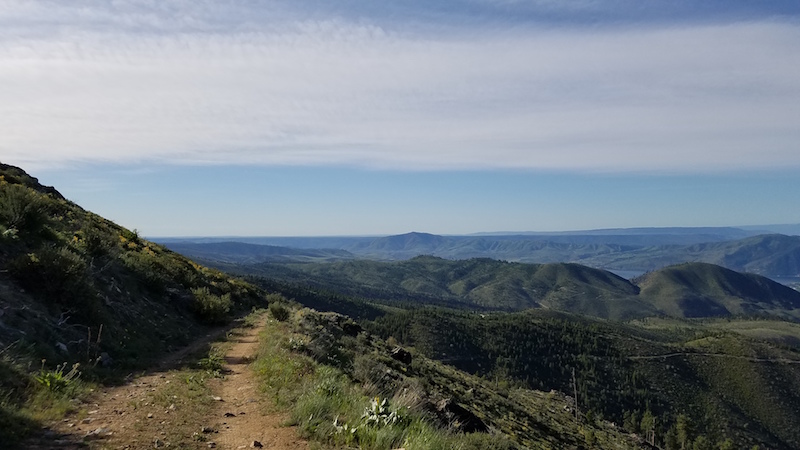
How good or bad is the gas mileage? If you’re planning to drive a lot, gas mileage is a huge factor. We’re pretty happy getting 25-30 MPG on the highway. Remember to calculate in that gas prices may not always be as low as they are currently. It’s no competition to my old Prius that could get 50 mpg on the highway, but it does ok for its class. Personally, I wouldn’t drive anything that gets below 22 mpg.
What color should you choose? Somewhat against logic, white cars show less dirt and grime than any other color I’ve tested. Finding a white Subaru was extremely hard and black ones were a dime a dozen. In the end, we stuck with getting white after a perfect demonstration - one dealer we visited had a black and white one side by side and as is the classic spring introduction, there was pollen everywhere. The white was sleek, and though it caused me to go into a fit of sneezes, I couldn’t see a trace of pollen on the exterior. The black was a yellow-dusted eyesore--you’ve been warned. A light silver or blue would also do well.
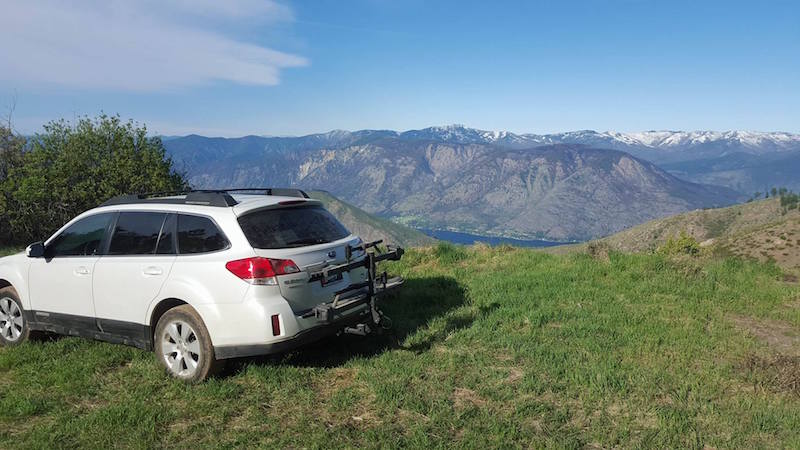
Can you outfit the car to carry your equipment? Whether you’re into snowboarding, kayaking, biking, or just need extra space to haul supplies, you need a vehicle that can handle your hobbies. Aftermarket roof bars and tow packages are typically available for any car, but they come with a high fee. If possible, choose a car that has both already attached. Our Outback has roof bars and a 1.25” hitch setup. The hitch allowed us to get a bike rack that can stay on while we open the back door. This is unbelievably convenient when you compare it to racks that attach directly to the car. If you’re thinking of mounting everything on the roof, make sure you choose a car that you can reach the top of or that you have room to carry a stepping stool. We love that our Outback has a lower roof than a Forester and most other crossover vehicles because we can easily reach the top.
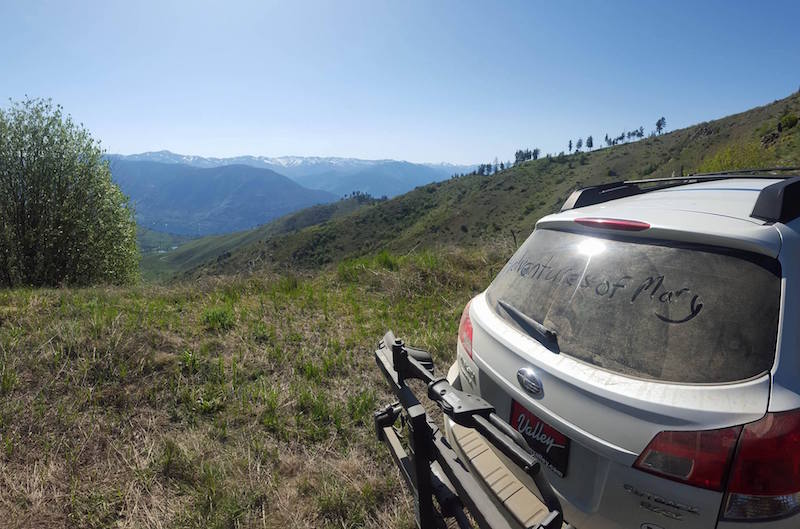
What electronic features do you need? For safety, legal, and convenience reasons, we wanted a sound system that had bluetooth capabilities and could connect to our phones and run Google Maps. We are both phone dependent for taking photos and recording driving videos, so the less we have to use them for functions the car can do, the better. Our Outback didn’t have any of these options, so we bought the Pioneer AVH-4100 and installed it ourselves. This took most of one afternoon and required some soldering, but we can now make hands-free calls and have Android Auto (it also works with iPhones) in our car for a total cost of approximately $650. This upgrade also includes installing a flush-mounted USB port.
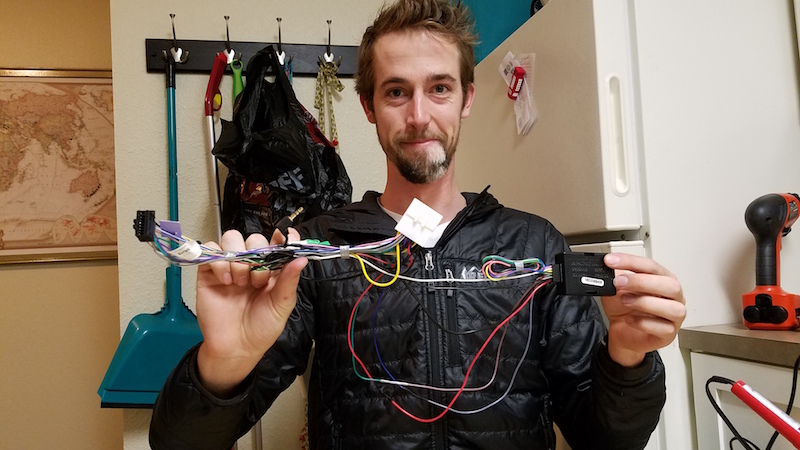
Something to also consider is if your car will not let you lock the keys inside. This could save you money and time down the road if you’re forgetful like I am. Additionally, if you can score a programmable driver’s seat, do so. Basically, this allows you to save two different driver’s seat positions so that when you switch with your travel pal, you can adjust your seat and mirrors with the push of a button. And make sure the cruise control works! The one on my Jeep Liberty didn’t and driving 3 times across the country with no cruise control was not only a pain but also earned me a speeding ticket.
What features and aspects do you consider a must for a road tripping vehicle? Comment below with your ideas.



